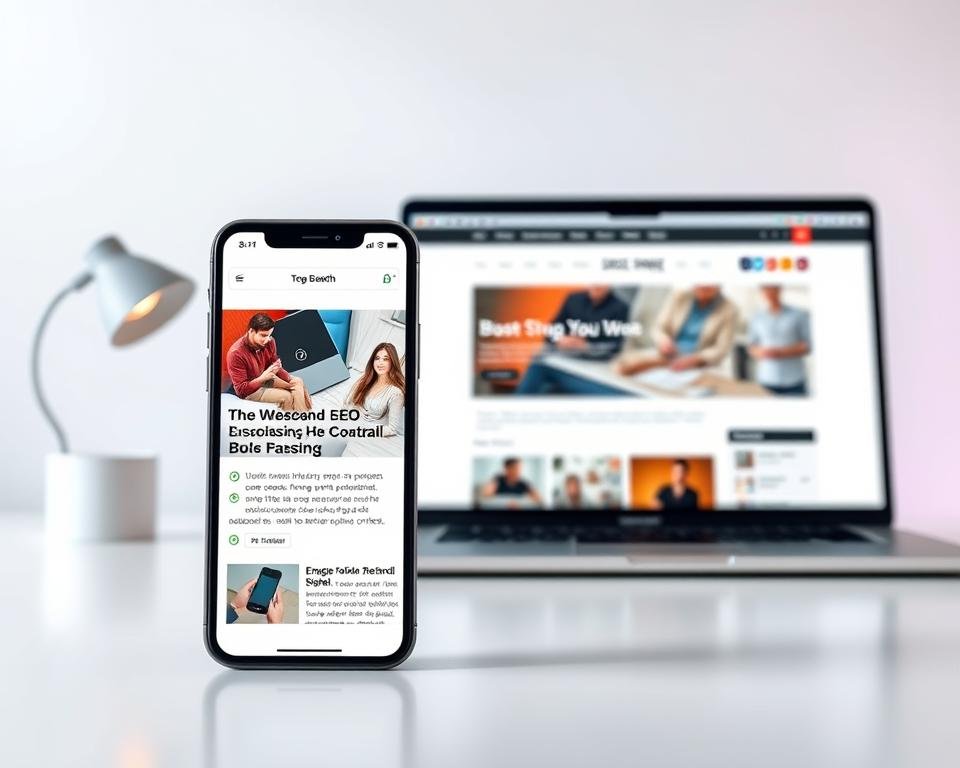In today’s digital landscape, having a mobile-friendly website is crucial for search engine optimization (SEO). With the majority of internet users accessing websites through mobile devices, a mobile-friendly blog is no longer a luxury, but a necessity.
As I delve into the world of SEO, I realize that a mobile-friendly blog is essential for improving search engine rankings and driving more traffic to your site. In this article, I will outline the steps to make your blog mobile-friendly and enhance its SEO.
Key Takeaways
- Understand the importance of a mobile-friendly website for SEO
- Learn how to optimize your blog’s design for mobile devices
- Discover the best practices for improving your blog’s mobile usability
- Find out how a mobile-friendly blog can boost your search engine rankings
- Explore the tools and resources needed to make your blog mobile-friendly
Understanding Mobile-Friendliness for SEO
In today’s digital landscape, having a mobile-friendly website is vital for search engine optimization. As I explore the concept of mobile-friendliness, it becomes clear that it’s not just about being accessible on mobile devices, but also about providing a seamless user experience.
A mobile-friendly website is essential for search engines like Google, as it directly impacts how they rank websites. I’ll discuss why mobile-friendliness matters and the key Google ranking factors that influence mobile SEO.
Why Mobile-Friendliness Matters
Mobile-friendliness matters because it significantly affects user experience. A website that is not optimized for mobile devices can lead to high bounce rates, negatively impacting search engine rankings. With the majority of internet users accessing websites through mobile devices, a mobile-friendly design is critical for engaging users and improving SEO.
A mobile-friendly website adapts to different screen sizes, ensuring that content is easily accessible and readable. This adaptability is crucial for retaining users and encouraging them to explore the website further.
Key Google Ranking Factors
Google considers several factors when ranking websites, especially for mobile SEO. Some of the key factors include:
- Page speed: A fast-loading website improves user experience and search engine rankings.
- Responsive design: A responsive design ensures that the website adapts to different screen sizes and devices.
- User experience: A website that is easy to navigate and provides valuable content enhances user experience.
- Mobile usability: A mobile-friendly website is essential for search engine rankings.
To illustrate the importance of these factors, consider the following table:
| Ranking Factor | Importance for Mobile SEO | Impact on User Experience |
|---|---|---|
| Page Speed | High | Fast loading times improve engagement. |
| Responsive Design | High | Adapts to different screen sizes, enhancing readability. |
| User Experience | High | Easy navigation and valuable content retain users. |
| Mobile Usability | Critical | Essential for search engine rankings and user engagement. |
By understanding and implementing these key ranking factors, I can improve my website’s mobile SEO and provide a better user experience.
Assessing Your Current Blog’s Mobile Usability
Assessing your blog’s mobile usability is the first step towards improving its SEO. A mobile-friendly blog is not just about aesthetics; it’s about providing a seamless user experience that can significantly impact your search engine rankings.
Tools to Check Mobile-Friendliness
To evaluate your blog’s mobile usability, you need the right tools. Here are some recommended options:
- Google’s Mobile-Friendly Test Tool: This tool analyzes your blog’s URL and provides a report on its mobile-friendliness.
- Google Search Console: It offers insights into how Google views your site on mobile devices, including any errors or issues.
- Moz’s Mobile Usability Tool: Provides detailed analysis and recommendations for improving mobile usability.
These tools can help identify areas that need improvement, such as responsive design issues, font sizes, and tap targets.

Analyzing Bounce Rates and User Engagement
Besides using tools to check mobile-friendliness, analyzing your blog’s bounce rates and user engagement metrics is crucial. High bounce rates and low engagement can indicate poor mobile usability.
- Monitor Bounce Rates: Use analytics tools to track bounce rates on mobile devices. A high bounce rate may indicate that your blog is not mobile-friendly.
- Analyze User Engagement: Look at metrics such as time on page, pages per session, and scroll depth to understand how users interact with your blog on mobile.
By understanding these metrics, you can identify areas for improvement and make data-driven decisions to enhance your blog’s mobile usability, ultimately boosting your SEO.
Responsive Design: The Best Approach for Blogs
I have found that a responsive design is the most effective way to ensure a blog is accessible and user-friendly across various devices. A responsive design allows the layout of a blog to adapt to different screen sizes and devices, providing an optimal reading experience for users.
What is Responsive Design?
Responsive design is an approach to web design that enables a website to adjust its layout and visual elements according to the screen size and device being used. This is achieved through the use of flexible grids, images, and media queries.
The key characteristic of a responsive design is its ability to automatically adjust the layout, making it easy to read and navigate on various devices, including desktops, laptops, tablets, and smartphones.
Benefits of a Responsive Layout
A responsive layout offers several benefits for blogs, including:
- Improved User Experience: A responsive design ensures that users have a consistent and optimal experience across different devices.
- Enhanced SEO: Search engines like Google favor responsive designs, as they provide a better user experience and are easier to crawl.
- Increased Conversions: By making it easier for users to navigate and read content, a responsive design can lead to increased engagement and conversions.
| Benefits | Description | Impact on SEO |
|---|---|---|
| Improved User Experience | Consistent experience across devices | Positive impact on user engagement metrics |
| Enhanced SEO | Favored by search engines | Better crawlability and indexing |
| Increased Conversions | Easier navigation and reading | Potential increase in conversion rates |
By implementing a responsive design, bloggers can improve their website’s user experience, enhance their SEO efforts, and increase conversions. As a result, a responsive design is considered a best practice for mobile SEO and optimization for blogs.
Optimizing Images for Mobile Devices
As I delve into the world of mobile-friendly blog SEO, image optimization stands out as a key factor. Optimizing images for mobile devices is not just about making them look good on smaller screens; it’s also about ensuring they don’t hinder the performance of your blog.
Images can significantly impact your blog’s load time, especially on mobile devices where internet speeds can vary. Therefore, it’s crucial to consider the size and format of your images.
Image Size and Format Considerations
When it comes to image size, it’s essential to strike a balance between quality and file size. Large, high-resolution images may look great on desktop, but they can slow down your mobile site. I recommend resizing images to suit the needs of your mobile users.
Choosing the right image format is also vital. Formats like JPEG are ideal for photographs because they offer a good balance between quality and compression. PNG is better suited for graphics and images that require transparency.
| Image Type | Recommended Format | Typical Use |
|---|---|---|
| Photographs | JPEG | Blog posts, articles |
| Graphics, Icons | PNG | Logos, infographics |
| Simple Images | GIF | Animated images, simple graphics |

Using Alt Text Effectively
Alt text is not just for accessibility; it’s also a crucial element for image SEO. By including relevant keywords in your alt text, you can improve your blog’s visibility in search engine results.
When writing alt text, be descriptive and concise. For example, instead of using “image1.jpg,” use “mobile-friendly blog SEO tips.”
Best practices for alt text include:
- Be descriptive and concise
- Include target keywords where relevant
- Avoid keyword stuffing
By optimizing your images with the right size, format, and alt text, you can significantly enhance your blog’s mobile-friendliness and SEO performance.
Speeding Up Your Mobile Blog
As I continue to optimize my blog for better performance, I realize that speeding up my mobile blog is crucial for enhancing user experience and search engine rankings. A fast-loading mobile blog not only improves engagement but also contributes to higher conversion rates.
Load Time Matters
Load time is a critical factor in determining the success of a mobile blog. Studies have shown that a delay of even a few seconds can lead to a significant drop in user engagement and, ultimately, affect search engine rankings. As a blogger, it’s essential to understand the importance of load time and take necessary steps to optimize it.
I have found that optimizing images is one of the most effective ways to improve load times. By compressing images and using the right file formats, I can significantly reduce the overall size of my web pages. Additionally, minifying code and leveraging browser caching can also contribute to faster load times.
Techniques to Boost Speed
There are several techniques that can help boost the speed of a mobile blog. Some of the most effective methods include:
- Optimizing images and compressing files
- Minifying CSS, JavaScript, and HTML code
- Leveraging browser caching to store frequently-used resources
- Using a Content Delivery Network (CDN) to distribute content
- Avoiding too many HTTP requests by reducing the number of elements on a page
To illustrate the impact of these techniques, let’s take a look at a comparison of load times before and after optimization:
| Technique | Before Optimization | After Optimization |
|---|---|---|
| Image Compression | 5 seconds | 2 seconds |
| Code Minification | 3 seconds | 1.5 seconds |
| Browser Caching | 4 seconds | 1 second |
As shown in the table, implementing these techniques can significantly improve load times, resulting in a better user experience and improved search engine rankings.
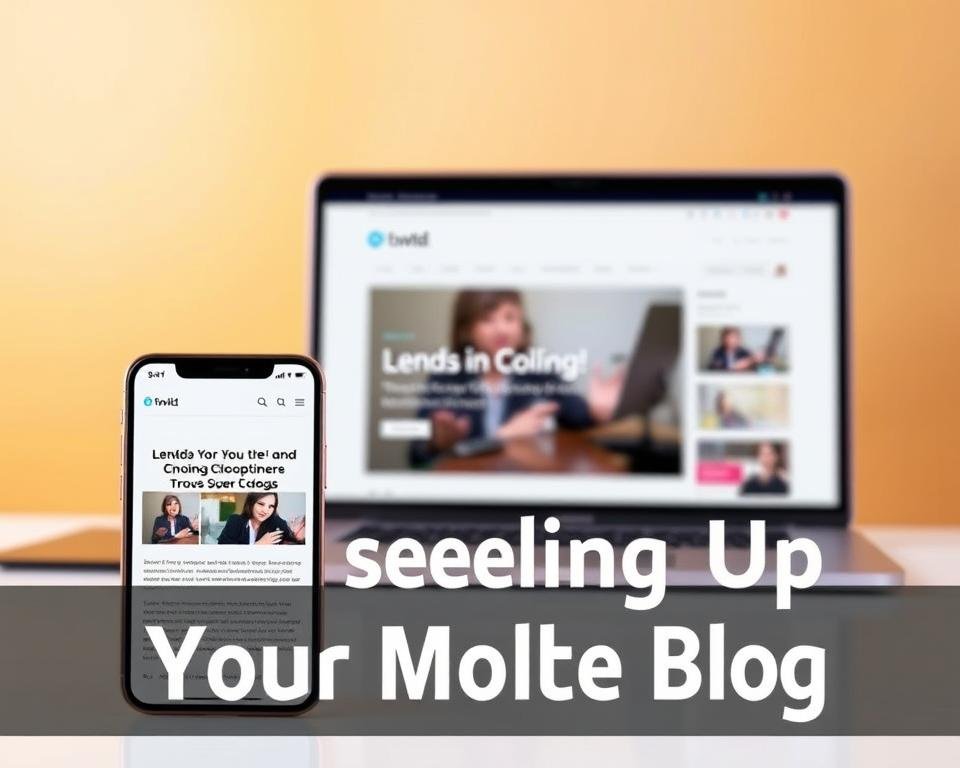
By implementing these techniques and continually monitoring my blog’s performance, I can ensure that my mobile blog remains fast, user-friendly, and optimized for search engines.
Improving Readability on Mobile
As mobile usage continues to rise, ensuring that your blog is readable on smaller screens is more important than ever. Readability is a crucial factor in user experience and can significantly impact engagement and bounce rates.
Choosing the Right Font Size and Style
Selecting an appropriate font size and style is vital for mobile readability. Fonts that are too small or complicated can be difficult to read on small screens. I recommend using clear, sans-serif fonts like Arial or Helvetica.
Key considerations for font size include:
- Using a minimum font size of 14px for body text
- Avoiding overly decorative fonts that can be hard to read
- Ensuring sufficient contrast between text and background
Formatting Content for Small Screens
Formatting your content to fit small screens is equally important. This involves breaking up long paragraphs, using headings, and incorporating lists or bullet points to make your content more digestible.
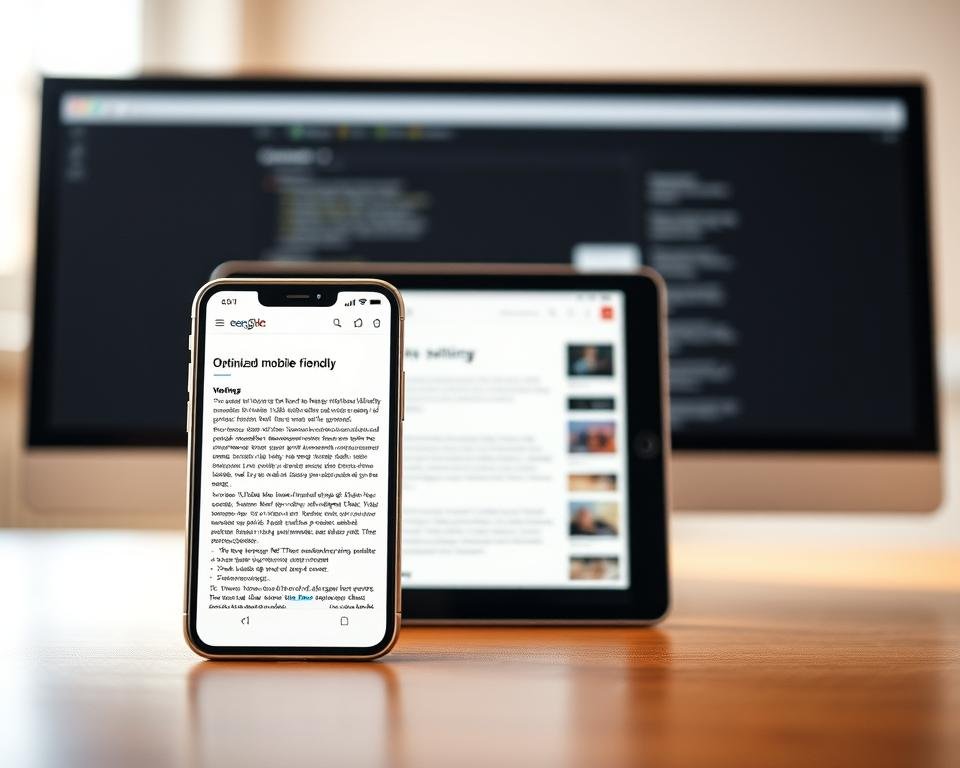
By adopting a responsive design, you can ensure that your content is displayed appropriately across various devices, enhancing user experience and supporting your SEO efforts, including valuable SEO tips for mobile site optimization.
Utilizing Mobile-Friendly Plugins and Tools
As a blogger, leveraging mobile-friendly plugins and tools is vital for SEO success. With the majority of users accessing blogs through mobile devices, it’s essential to ensure that your blog is optimized for mobile search.
To achieve this, I recommend exploring plugins that are specifically designed to enhance mobile SEO. These plugins can help improve your blog’s visibility, user experience, and overall search engine ranking.
Recommended Plugins for SEO
Some of the top plugins for mobile SEO include those that offer features such as image optimization, caching, and content delivery networks (CDNs). For instance, plugins like WP Rocket and W3 Total Cache can significantly improve your blog’s load time, which is a critical factor for mobile SEO.
Key features to look for in mobile SEO plugins include:
- Image compression and lazy loading
- Caching and minification of CSS and JavaScript files
- CDN integration for faster content delivery
By incorporating these plugins into your blog, you can improve your mobile SEO and provide a better user experience for your visitors.
Tools for Testing Mobile Compatibility
In addition to using mobile-friendly plugins, it’s crucial to test your blog’s mobile compatibility regularly. Tools like Google’s Mobile-Friendly Test and SEMrush can help you identify and fix mobile usability issues.

These tools can provide valuable insights into your blog’s mobile performance, including page speed, responsiveness, and overall user experience. By leveraging these tools, you can ensure that your blog is optimized for mobile search and provide a seamless experience for your users.
Crafting Mobile-Optimized Content
Mobile optimization is not just about design; it’s also about creating content that resonates with mobile users. As I delve into making my blog more mobile-friendly, I understand that the way I craft my content plays a significant role in enhancing user experience and search engine rankings.
Shorter Sentences and Paragraphs
One key aspect of mobile-optimized content is using shorter sentences and paragraphs. Mobile users often scan content rather than read it thoroughly, so making it concise and easily digestible is crucial.
I achieve this by breaking down complex information into simpler, bite-sized chunks. This not only improves readability but also helps in retaining the user’s attention.
Benefits of concise content include:
- Improved user engagement
- Better retention rates
- Enhanced SEO rankings
Adding Multimedia Elements
Incorporating multimedia elements such as images, videos, and infographics can significantly enhance the mobile user experience. These elements can help in conveying complex information in a more engaging and accessible way.
| Multimedia Element | Benefits |
|---|---|
| Images | Enhance visual appeal, illustrate complex concepts |
| Videos | Increase engagement, provide detailed explanations |
| Infographics | Present data in a visually appealing format, simplify complex information |
By incorporating these elements effectively, I can make my content more engaging and shareable, which in turn can improve my blog’s visibility and SEO rankings.
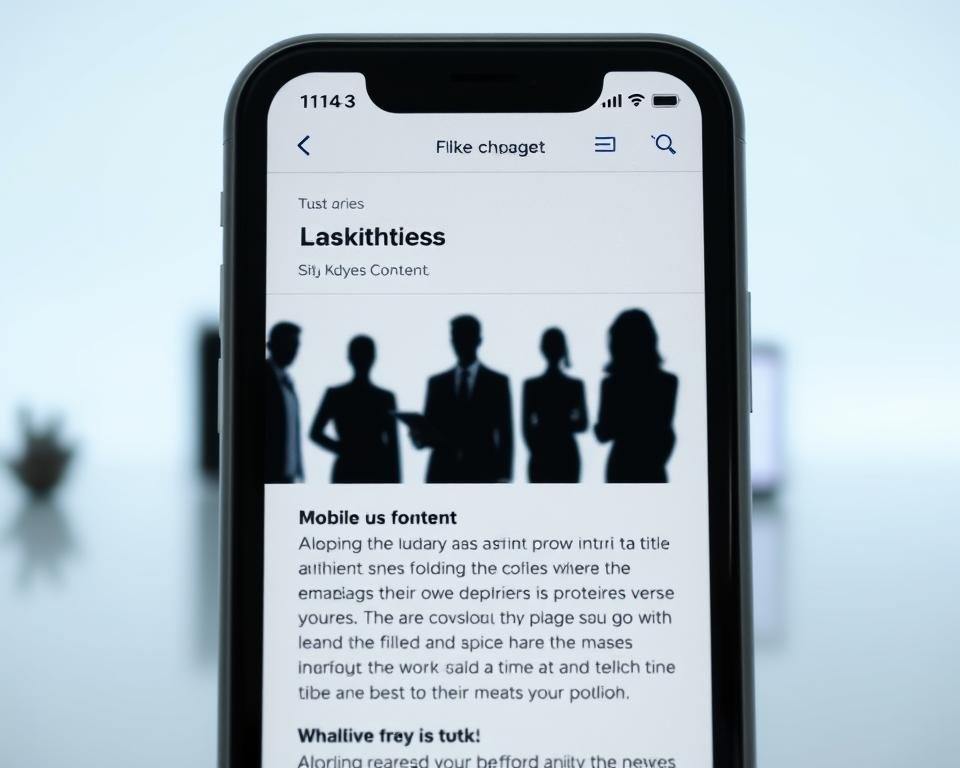
Focusing on Local SEO for Mobile Users
As mobile devices become increasingly prevalent, local SEO has emerged as a critical factor in determining online visibility. With more users searching for local businesses on their mobile devices, it’s essential to optimize your blog for local SEO to attract nearby customers.
Importance of Local Listings
Local listings play a vital role in enhancing your blog’s visibility in local search results. By claiming and optimizing your Google My Business listing, you can improve your chances of appearing in the coveted “Local Pack” section of search results. This not only increases your visibility but also drives more targeted traffic to your blog.
Claiming and optimizing your Google My Business listing involves several key steps: verifying your business, providing accurate and up-to-date information, and responding promptly to customer reviews.
Tips for Local SEO Optimization
To optimize your blog for local SEO, consider the following tips:
- Use location-specific keywords in your content to attract local search queries.
- Ensure your blog is listed in local directories and citations to improve visibility.
- Optimize your website’s metadata, including title tags and meta descriptions, with local keywords.
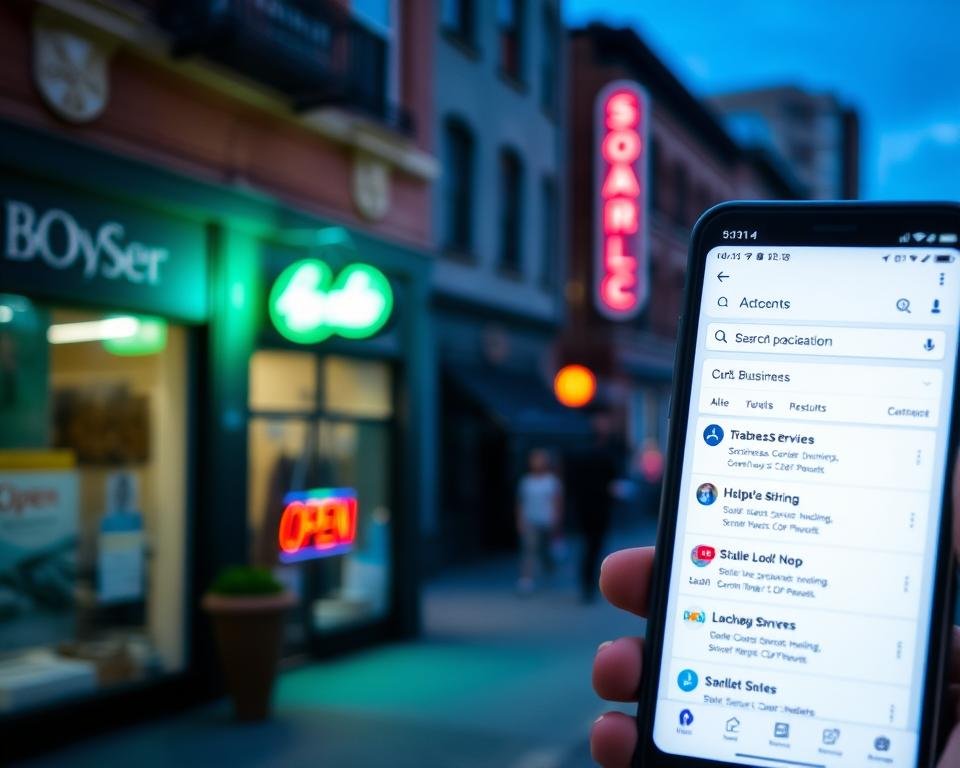
By implementing these strategies, you can enhance your blog’s local SEO and attract more mobile users searching for local content. Effective local SEO optimization is crucial for mobile optimization for blogs and can significantly improve your online presence.
For more SEO tips for mobile site, consider regularly updating your content with fresh, locally relevant information and engaging with your audience through social media.
Regular Testing and Updates for Mobile-Friendliness
Maintaining a mobile-friendly blog is not a one-time task; it requires regular testing and updates to ensure long-term SEO success. As I continue to optimize my blog for better user experience, I need to stay on top of the latest mobile trends and technologies.
Tools for Regular Check-Ups
To keep my blog in check, I use tools like Google Search Console and SEMrush to monitor mobile usability and identify areas for improvement. These tools help me detect issues such as slow load times, poor responsiveness, and other factors that can negatively impact my blog’s mobile-friendliness.
Staying Current with Mobile Trends
Staying up-to-date with the latest mobile trends in SEO is crucial for maintaining a competitive edge. I make it a point to follow industry leaders and blogs, such as Moz and Search Engine Journal, to stay informed about the latest developments in mobile SEO and responsive design for SEO.
By regularly testing and updating my blog, I can ensure that it remains mobile-friendly and continues to rank well in search engine results, ultimately driving more traffic and engagement to my site, which is essential for How to Make Your Blog Mobile-Friendly for SEO.
